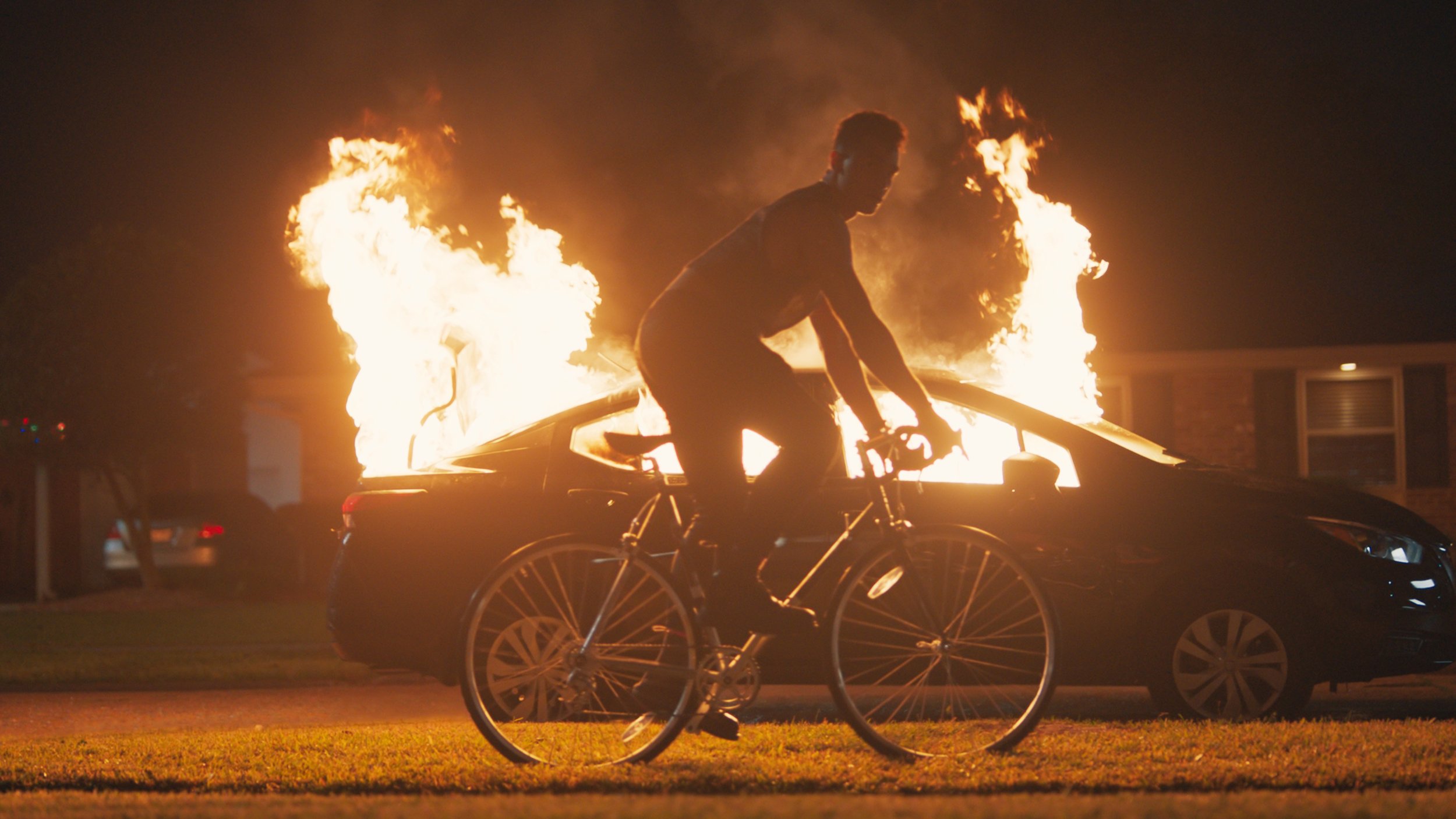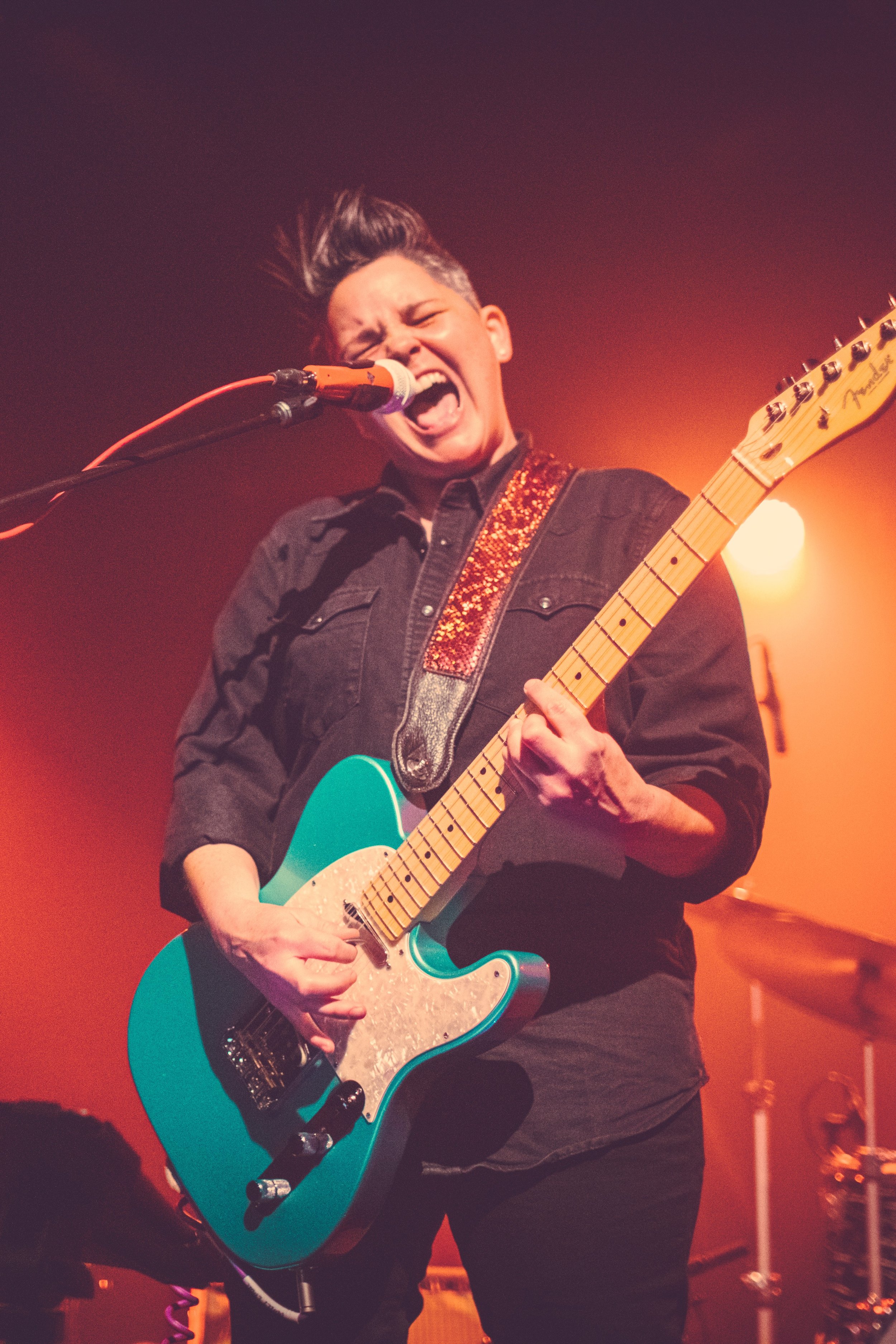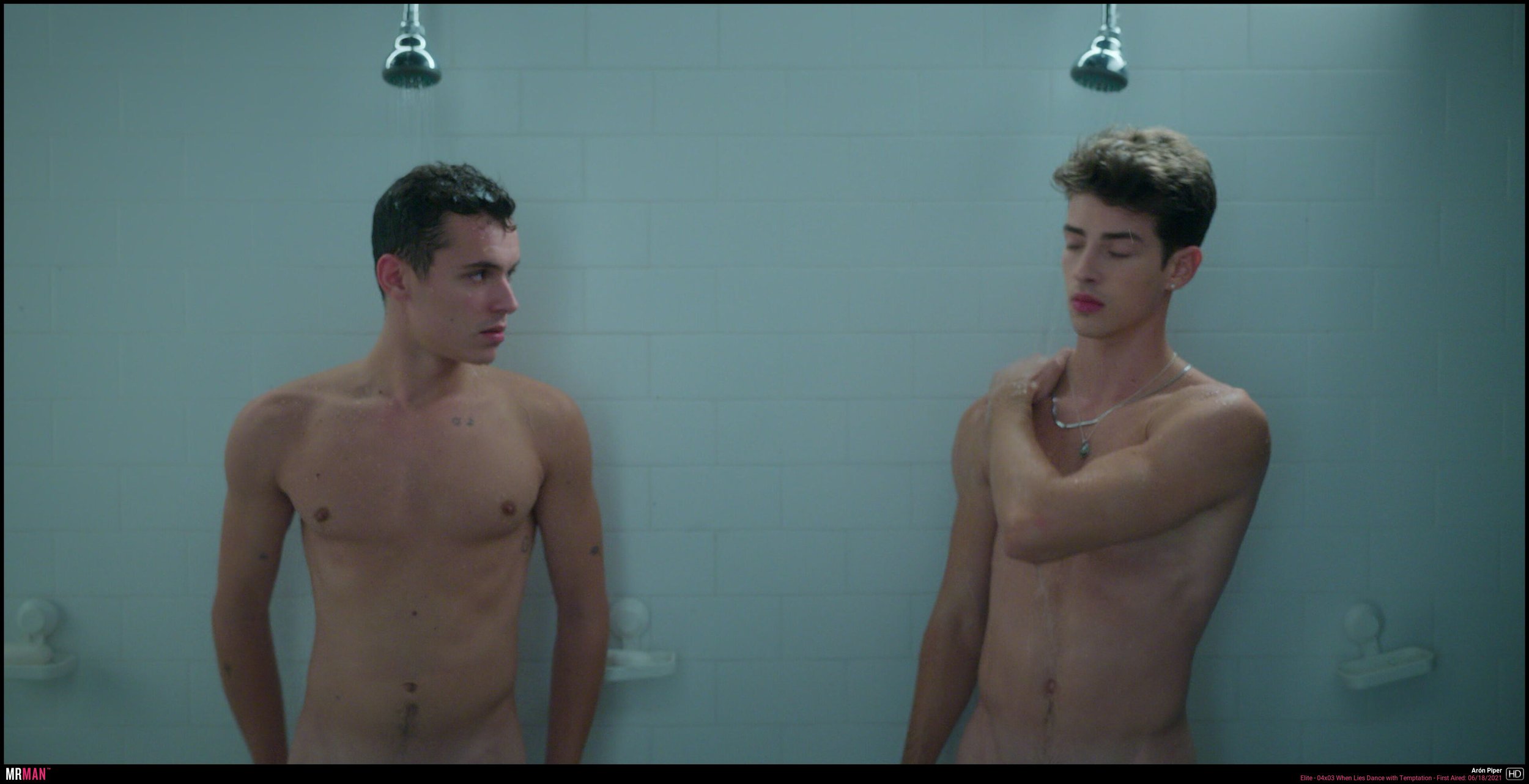Peacock Reboots a Gay Staple with Unexpected Success QUEER AF
By Arnold Wayne Jones
If you’re old enough (and gay enough) to remember watching when Russell T. Davies’ original British series Queer as Folk debuted more than 20 years ago – I, sadly, am – then you will never forget the adrenaline-rush of seeing sexually-active gay men engaged in realistic-seeming sex without AIDS, shame or suicide being the dramatic driving force. It was staggering in its radicalism. There was no marriage equality; it was still GLBT – the “A” hadn’t been added, the letters reversed, the Q codified. It was sexy, frivolous, and its politics was that of stentorian outrage at closet-cases, homophobia and hypocrisy. The original QAF – and its American remake, which ran on pay-cable for five seasons – was a kind of fantasy soap opera of bed-hopping, shade-throwing and melodramatic cliffhangers. (Question: Should we call a gay soap opera a “lube musical”? But I digress.)
We live in a new world now, although not always a better world. Gay weddings are now called “weddings,” Grindr gets joked about in primetime, COVID has replaced HIV as the virus of the moment, trans kids are… well, a thing. But there’s also the Pulse nightclub shooting, anti-trans legislation and the current SCOTUS membership. We’ve come far, but there’s still far to go.
Which is why, as I discovered slightly to my surprise, that we really needed a reboot of Queer as Folk. I needed convincing; I’m generally opposed to rehashing old properties simply because Hollywood is so bereft of courage or originality that it assumes audiences only want what they already know. (Unfortunately, they are often right.) Why revisit the same characters, or “new” characters regurgitating the same ideas, just for clicks and a 4.5 in the demo? The fact that this QAF was coming to NBC’s Peacock – the buggiest and boringest of the major streaming services from the most middle-brow of networks – gave me little hope.
Then I watched the first episode. And the second. And third. And it dawned on me that, of all retro series reboots out there, this may be the one that has the best chance to seem more relevant than the original.
In some ways, this is a critique of the American version. A dirty little secret: Most gays will concede that we often hate-watched that show. We wanted to see idealized versions of our own lives on screen (hard bodies glistening with perspiration in soft-core lighting), but these scenes were sandwiched between stereotypes, often painfully overwrought dialogue and predictable plotting. Most episodes left you with the same dissatisfaction as a Diet Coke: You asked for it, but the empty aftertaste left you wanting something better. The Peacock version needed to improve upon those feelings, and so far, it has.
The first amazement for me was the opening scene: A fairly explicit and rolicking anal sex scene that shows more ass and abs than I expected from NBC. The second amazement: Diversity. Another reason why the earlier incarnation was so disappointing was the total lack of color in the primary cast: Of the dozen or so regulars, every single one was as white as a Trump rally. There were token lesbians, a mix of tops and bottoms, twinks and doms but virtually no bears, no queens, and no POC. Not so this time out. The lesbian couple are mixed race – a butch black dyke and a thin lipstick transwoman; the local slut is mixed, the adopted son of white parents (including an almost unrecognizable Kim Cattrall, doing excellent character work) with a brother on the spectrum (Special star Ryan O’Connell); there are Latinos, gender-fluid teens, otters, a disabled guy and Juliette Lewis. (Sadly, no senior queers – hey, it’s still a gay fantasy.)
Another big difference is how the stakes seem contemporary and relevant. There’s less worrying about HIV (PrEP!) and molly overdoses and more mass shootings, social media awareness and criticism of faux allies. But there are still the cliches: Young gays having/wanting kids (heteronormative ideals are the flesh-eating viruses of most mainstream portrayals of gay culture); superficial conversations about overwrought emotions; secondary characters praising/apologizing for the anti-heroic stars; and so, so many pretty boys fucking wildly to fill in for plot (OK, I admit I like that part a lot). The trade off works, though.
Courtesy of NBC/Universal
I’ve enjoyed the acting (other than O’Connell, who is sweet but never convincing in his line delivery) and the mancandy helps the bad dialogue go down easier. I’ll definitely watch all eight episodes and probably wait for another season. And maybe two decades from now, another version will come along and rewrite the gay script over again for a future generation. And maybe it will be Queer AF too.
This Pride, Talia Keys Releases “We’re Here”
Photo Credit: Stefan Poulos
Her Call-to-Action Song and Visual Encourages Queer People
Be Proud, Keep Fighting and Shake Sh*t Up
Talia Keys is celebrating Pride month with the release of a new music video that calls for today’s queer generation to be loud and proud in who they are. Written and produced by Keys, “We’re Here” is a reggae inspired, feel good anthem that is broken into three parts. The first verse is about the internal struggles many LGBTQ youth face when their outward appearance doesn’t quite fit the societal mold. The second verse challenges them to smash the patriarchy of society’s expectations around gender binaries. Finally, the outro encourages all to own who they are because by simply existing, they are changing the world into a better place. “We need to fight the status quo,” asserts Keys, “Because like it or not, We’re Queer, We’re Here and We aren’t going anywhere.” Talia Keys’ “We’re Here” is available now on Apple Music, Spotify and all digital platforms. Its music video is on YouTube.
“I was inspired to create ‘We’re Here’ because I grew up in Mormon Utah as a closeted queer Catholic girl,” Keys reflects. “Being different in Utah put a target on me. In school, I was bullied for being a Tomboy and then I became a bully to protect my secret.” When she finally came out in her mid-twenties, Talia, a successful musician, lost fans and gigs, but she kept her drive. Today, she uses her music and performances to preach the good word of love, acceptance and fucking shit up. “I see the stage as my platform to spread awareness.”
That message is echoed in the “We’re Here” music video. It was shot in an empty theater because, as Talia explains, “Sometimes it feels empty when you come out and the support you once had is gone. As queer people, though, we learn to be strong willed and to perform with our entire heart, even if it is to an empty room.” She also wanted to shed light on the fact that queer art is suffering during the pandemic.
The video features several queer, trans, enby artists and drag queens. “We’re Here” stars Madazon Can-Can, a gender non-binary drag king, burlesque dancer and clown. “I first saw Madazon Can-Can perform at our local Pride and was captivated by their ability to entertain rowdy queers, dance burlesque, shine as a drag king and make us laugh and cry as a clown,” Talia says. “When I began visualizing the We’re Here’ video, I immediately thought of Madazon whose multifaceted talents would be able to convey the message of the song.”
She also cast local drag artists Kay Bye (they/them), Lilia Maughn (she/her/they/them) and M’Lady Wood (she/her), as well as local musician Zaza Historia VanDyke (She/Her) in the music video and assembled an all-Queer crew to shoot the video. The award-winning filmmaker Melahn Atkinson (she/they) produced, filmed and edited “We’re Here.” Talia directed, produced and acted in the video. Ismene Vetas and Marz Catrow (they/them) long-time collaborators, were the additional camera operators.
Talia Keys is an activist-musician who has enjoyed a loyal following in Salt Lake City clubs for over a decade, and has made a name for herself on national tours and jam festivals from coast to coast. Growing up, she and her brother were raised by a single mother. Her dad struggled with addiction and his battles forced Talia to grow up sooner than one would expect.
Still, she was a kid with a big imagination and whether she was pretending to be Michael Jordan or impersonating Elvis Presley, Talia could entertain herself for hours. She began piano lessons at age 9, drums at 11, guitar at 16 and mandolin at 22. Music was always very prevalent throughout her youth, beginning with The Beatles and turning to Bob Marley in middle school. Aretha Franklin, Janis Joplin, Pink Floyd, and Talking Heads were some of the other artists that played a big role in her musical development. She even had a Kris Kross phase (and yes, she wore her clothes backwards for a time). It opened Talia up to rap and hip hop and she became a huge fan of Tribe Called Quest, The Fugees and Blackalicious.
Talia Keys’ trademark fire and brimstone stage presence is an amalgam of her journey, identity, and musical influences. While her physical appearance may scream LESBO, her music does not. It presents a modern twist on the rock n’ roll troubadour singing songs of struggle and ultimately, triumph.
Talia Keys’ “We’re Here” is available now on Apple Music, Spotify and all digital platforms. Its music video is on YouTube. Visit Talia’s website and follow her on Instagram @taliakeys
Mr. Man Unveils “Battle of the Streaming Services” Pride Guide
Netflix Wins Title of Streamer with the Most-Gay Content
This Pride, Mr. Man is pitting the top streaming services up against one another to determine which network is the gayest with the best male nudity. The editorial team at Mr. Man had the laborious task of combing through all of the content on Netflix, Hulu, HBO, Showtime, and Prime Video to find their gayest titles. They then went even further, counting the number of intimate gay scenes within each title! Results for “Mr. Man’s Battle of the Streaming Services” Pride Guide were broken down into four categories: the series with the Most Gay Scenes, those with the Most Nude Scenes, and those with the Most Full Frontal and the Most Butt Scenes.
Netflix wins the Most Gay Scenes category. It comes as little surprise as Netflix is the network behind such LGBTQ hits as Grace and Frankie, Orange Is the New Black, Queer Eye, and its latest phenomenon Heartstopper, starring cutie Kit Connor. But it is the network’s other Kit, Kit Williamson, who stars in its gayest title. With 28 steamy gay scenes in it, Eastsiders, the popular series about a tangled web of gay relationships, has the distinction of being the gayest title on the gayest streaming network.
HBO comes in second place with 128 gay scenes, 17 of which come from Looking, HBO’s very first series to center around the lives of gay men. The show starring Jonathan Groff, Russell Tovey and Murray Bartlett enjoyed two seasons and a TV movie and nearly every episode featured a steamy gay scene.
In the Most Nude Scenes category, Netflix once again dominates with over 700 male nude scenes! El Marginal, the Argentinian cops-and-criminals show tops all other series with 28 scenes, ten of which are full frontal. Elite, its teen series features the most rear scenes with 26 bare bottoms!
HBO comes a close second in the Most Nude Scenes category with Oz, the series about inmates and correctional officers battling for power and survival, scoring the most naked scenes on the network. Mr. Man counts 72 nude scenes in Oz, with 43 being full frontal! In fact, the one category HBO leads in “Mr. Man’s Battle of the Streaming Services” is in Most Full Frontal Scenes, and it is in large part thanks to Oz.
Showtime, the network that introduced Queer as Folk to the world, ranks as the #3 streaming service in all categories in the battle. It’s show, Shameless, features male nudity in nearly every one of its 134 episodes and Gigolo, it’s reality series about real life escorts in Sin City, is second only to Oz for its number of full-frontal scenes.
Prime Video and Hulu consistently rank at the bottom of “Mr. Man’s Battle of the Streaming Services” Pride Guide but special recognition goes to Prime Video’s El Juego de las Llaves, the only series to be named in all four categories, and to Hulu, for scoring big in gay hearts with its two endearing series, Love Victor and Normal People.
All scenes featured in “Mr. Man’s Battle of the Streaming Services” Pride Guide are viewable in their entirety with free signup at https://www.mrman.com/promos/tv-pride-guide.
First-Look Images for Billy Porter’s Directorial Debut ANYTHING’S POSSIBLE – Globally on Prime Video July 22
Launching Globally on July 22 Exclusively on Prime Video
Anything’s Possible is a delightfully modern Gen Z coming-of-age story that follows Kelsa, a confident high school girl who is trans, as she navigates through senior year. When her classmate Khal gets a crush on her, he musters up the courage to ask her out, despite the drama he knows it could cause. What transpires is a romance that showcases the joy, tenderness, and pain of young love.
Director: Billy Porter
Written by: Ximena García Lecuona
Producers: Christine Vachon, David Hinojosa, Andrew Lauren, D.J. Gugenheim
Executive Producers: Ximena García Lecuona, Billy Porter, Allison Rose Carter
Music by: Leo Birenberg
Executive Music Producers: Billy Porter, Justin Tranter
Cast: Eva Reign, Abubakr Ali, and Renée Elise Goldsberry
Genre: Romance, Coming-of-Age Drama
Rating: PG-13 for strong language, thematic material, sexual material, and brief teen drinking
Soundtrack on Republic Records, a division of UMG Recordings, Inc.
#AnythingsPossible
























